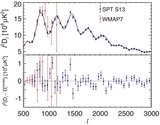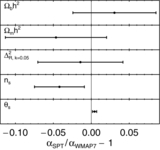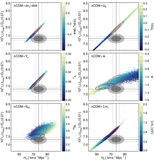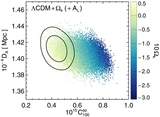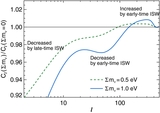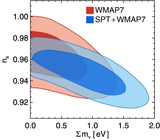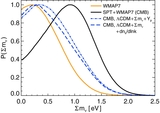Image Details
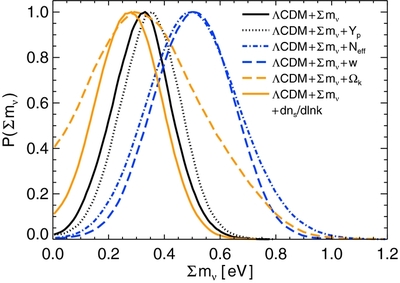
Caption: Figure 11.
This figure illustrates the robustness of the preference for positive neutrino masses to other parameter extensions. The marginalized
one-dimensional posteriors for ∑
m
ν are shown for two-parameter extensions to ΛCDM for the combined CMB+BAO+
H
0+
 data sets (for
w, SNe are used instead of
H
0). Allowing significant curvature or running can significantly reduce the preference for nonzero neutrino masses (to 1.7 and
2.4σ respectively). Other extensions increase the preference for positive neutrino masses.
data sets (for
w, SNe are used instead of
H
0). Allowing significant curvature or running can significantly reduce the preference for nonzero neutrino masses (to 1.7 and
2.4σ respectively). Other extensions increase the preference for positive neutrino masses.
Copyright and Terms & Conditions
© 2014. The American Astronomical Society. All rights reserved.


